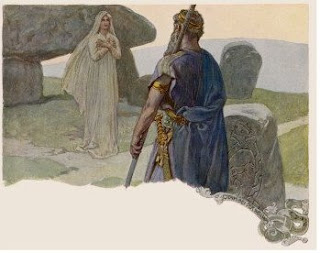There were seiðr rituals for divination and clairvoyance; for seeking out the hidden, both in the secrets of the mind and in physical locations; for healing the sick; for bringing good luck; for controlling the weather; for calling game animals and fish. Importantly, it could also be used for the opposite of these things – to curse an individual or an enterprise; to blight the land and make it barren; to induce illness; to tell false futures and thus to set their recipients on a road to disaster; to injure, maim and kill, in domestic disputes and especially in battle. [Price, Neil S. 2002. The Viking Way: Religion and War in Late Iron Age Scandinavia]
A practitioner was called a seiðkonur. A woman who practiced was sometimes called a vōlva (seeress). The Norse word for witch was norn; norns could also practice seiðr. A seiðkonur could be male or female; however, there is a suggestion that there was an ergi ("unmanliness") to it. Even the ultimate practitioner of seiðr, Odin himself, was labeled with this epithet in works by Snorri Sturluson.
How it developed in Scandinavian countries is unknown, but its demise took place gradually as Christianization took over.
Snorri Sturluson was one of the big names in Norse literature. Although I have mentioned him before, I haven't talked much about him. I'll fix that gap in our medieval discussion next time.

No comments:
Post a Comment
Note: Only a member of this blog may post a comment.